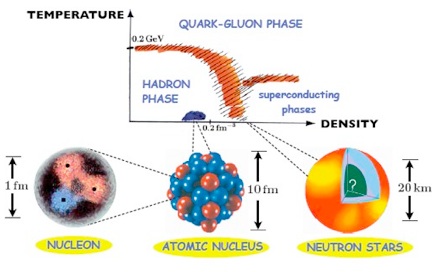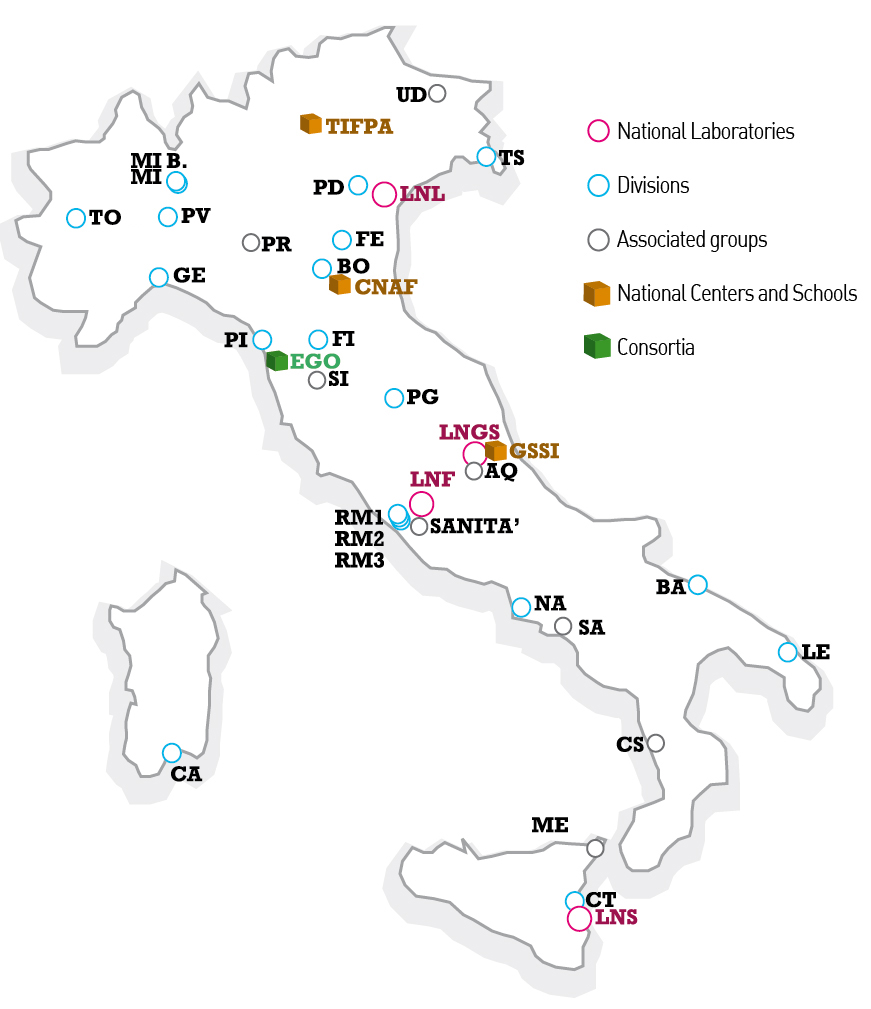SIM
Strongly Interacting Matter at high density and temperature
 This project has, as experimental counterparts, the experiments on relativistic heavy-ion collisions conducted in various facilities, particularly at the Relativistic Heavy Ion Collider (RHIC) in Brookhaven National Laboratories (USA) and at the Large Hadron Collider (LHC) at CERN, as well as in the upcoming facilities FAIR (GSI, Germany) and NICA (JINR, Dubna).
This project has, as experimental counterparts, the experiments on relativistic heavy-ion collisions conducted in various facilities, particularly at the Relativistic Heavy Ion Collider (RHIC) in Brookhaven National Laboratories (USA) and at the Large Hadron Collider (LHC) at CERN, as well as in the upcoming facilities FAIR (GSI, Germany) and NICA (JINR, Dubna).The thermodynamic and transport properties of strongly interacting matter can be studied theoretically from first principles mostly through numerical computations (lattice QCD). The goal is to connect the properties of the QGP predicted by lattice QCD with the phenomenological description of ultra-relativistic nuclear collisions. For this purpose, it is necessary to use and develop theoretical tools such as relativistic hydrodynamics and relativistic transport theory in extreme conditions, and to perform realistic simulations of nuclear collision dynamics. Another major goal is the development and the use of the insights provided by recent analytical approaches to non perturbative QCD.
The SIM research programme includes several aspects of relativistic heavy-ion collisions that are drawing increasing attention in the community, which are related to the unprecedented conditions of the created matter not just in terms of temperature and density, but also of vorticity (𝜔 ≈1021 s-1 ) and magnetic field (B ≈ 1018 Gauss). These magnitudes were never achieved nor they are achievable otherwise in terrestrial laboratories. This will also match the huge amount of data coming from the RHIC and theHigh Luminosity LHC upgrade. Hence special heed will be devoted to the study of quantum effects in relativistic hydrodynamics such as collective polarization and local parity violation; non-equilibrium dynamics and electromagnetic field in the early stage of the collision, dynamics of heavy quarks and in-medium hadronization. Another major point will be the study of pp and pA collisions that - at very high energy - show striking similarities to nuclei collisions.
